java/函数式接口-function?
1 lambda依赖上下文
1.1 测试lambda表达式
public class Test3 { public static void main(String[] args) { TheInterface1 t1 = () -> {}; TheInterface2 t2 = () -> {}; System.out.println(t1.getClass().getInterfaces()[0]); System.out.println(t2.getClass().getInterfaces()[0]); } } @FunctionalInterface interface TheInterface1{ void myMethod1(); } interface TheInterface2{ void myMethod2(); }
lambda表达式依赖于上下文。是个对象。是函数式接口的实现类
1.2 结合Thread理解
开启一个线程


new Thread(new Runnable() { @Override public void run() { } }).start(); new Thread(() -> System.out.println("hello world")).start();
1.3 理解<>,菱形语法

Explicit(显示) type argument String can be replaced with <>
1.4 理解Stream
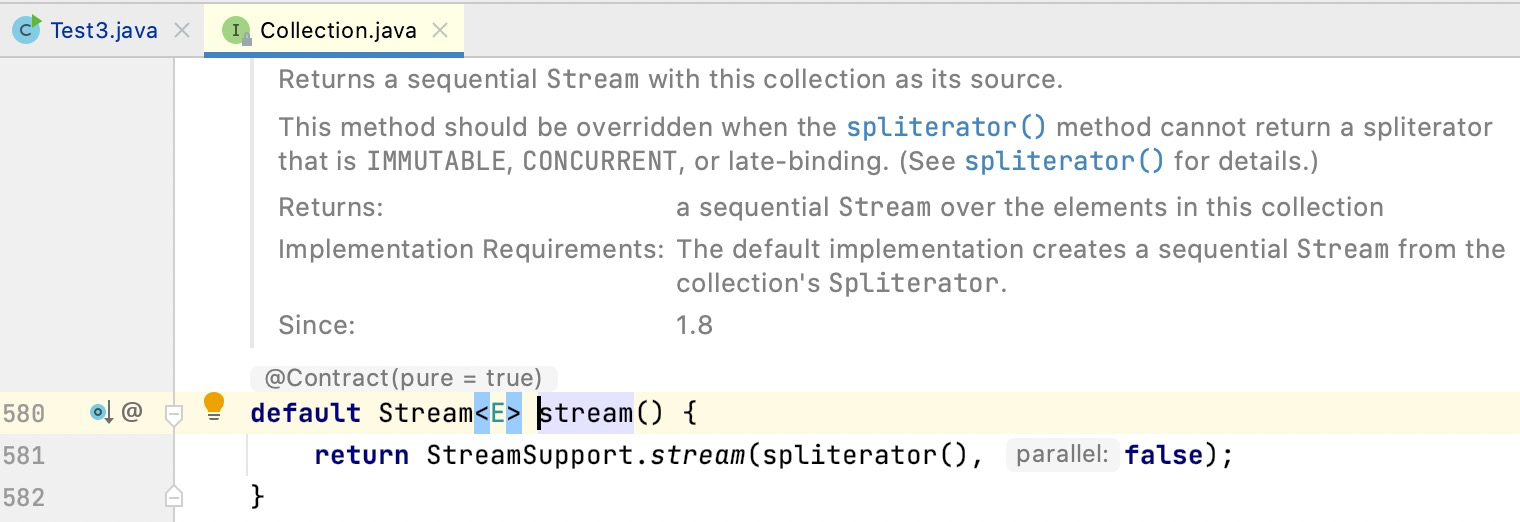
/** * Returns a sequential(串形) {@code Stream} with this collection as its source. * * <p>This method should be overridden when the {@link #spliterator()} * method cannot return a spliterator that is {@code IMMUTABLE(并发的)}, * {@code CONCURRENT(不可变的)}, or <em>late-binding(延迟绑定的)</em>. (See {@link #spliterator()} * for details.) * * @implSpec * The default implementation creates a sequential {@code Stream} from the * collection's {@code Spliterator}. * * @return a sequential {@code Stream} over the elements in this collection * @since 1.8 */
同上:调用stream后,返回一个Stream对象

/** * Returns a stream consisting(组成) of the results of applying the given * function to the elements of this stream. * * <p>This is an <a href="package-summary.html#StreamOps">intermediate * operation(中间操作)</a>. * * @param <R> The element type of the new stream * @param mapper a <a href="package-summary.html#NonInterference">non-interfering(无干扰)</a>, * <a href="package-summary.html#Statelessness">stateless(无状态)</a> * function to apply to each element * @return the new stream */
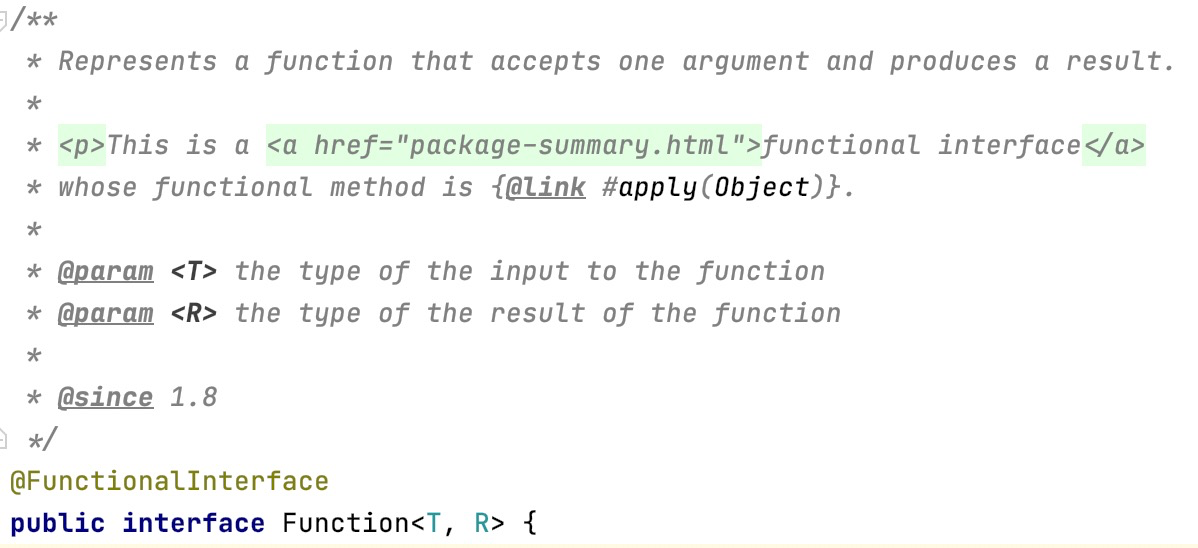
/** * Represents(代表) a function that accepts one argument and produces a result. * * <p>This is a <a href="package-summary.html">functional interface</a> * whose functional method is {@link #apply(Object)}. * * @param <T> the type of the input to the function * @param <R> the type of the result of the function * * @since 1.8 */
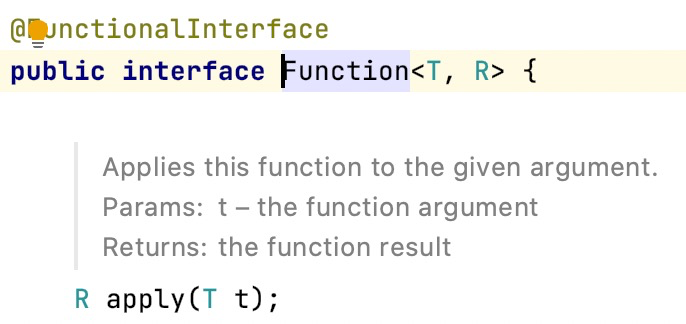

/** * Applies(应用) this function to the given argument. * * @param t the function argument * @return the function result */
可以看到map的参数是Function,是个函数式接口。本就可以使用lambda/方法引用实现。可以点击上述标注的地方,确认具体实现的地方。。。

使用?String::toUpperCase是方法引用,类名直接引用共有方法,类名.共有方法不可行,因为方法不是静态方法,但是方法引用就可以
1.5 理解语句和表达式

2 lambda,传递的是一个行为
2.1 传递行为
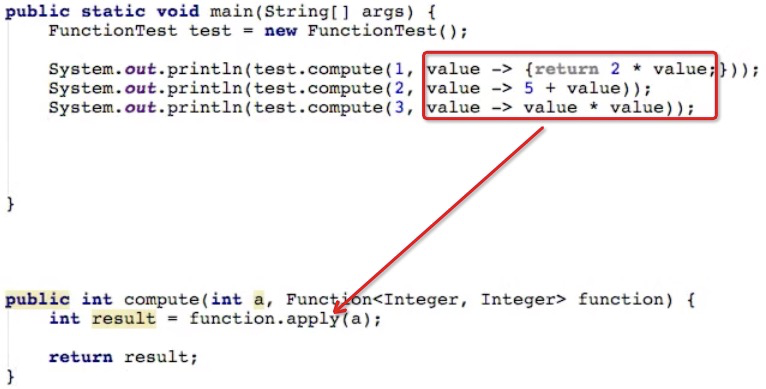
2.2 两个function的串联

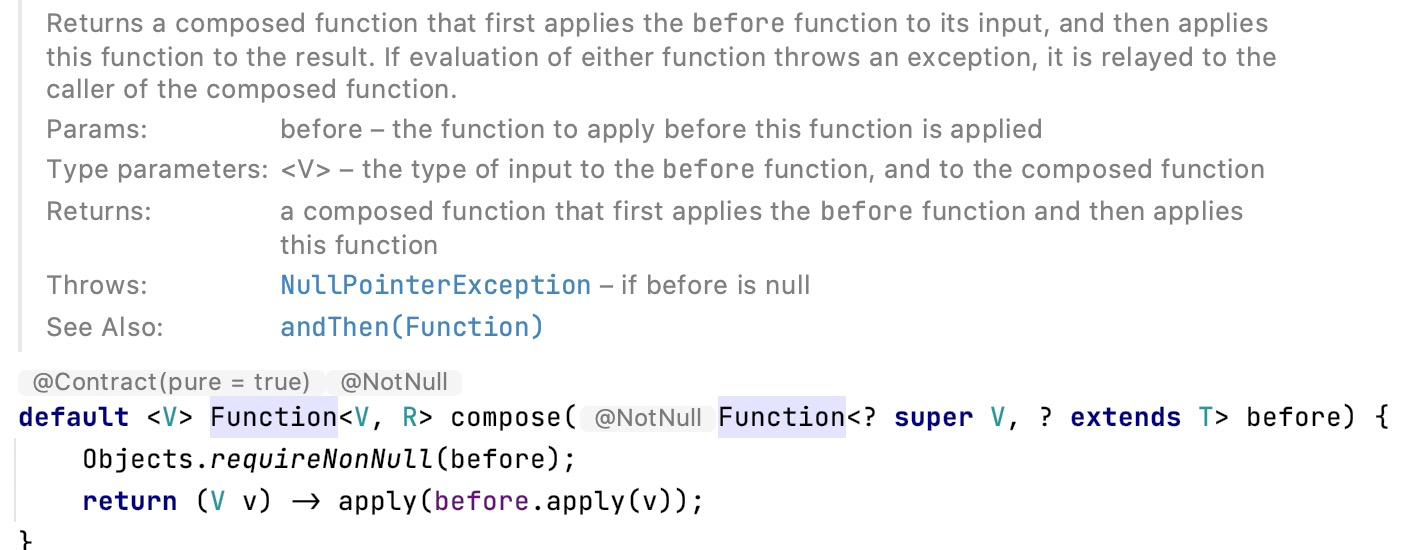
/** * Returns a composed(组合) function that first applies the {@code before} * function to its input, and then applies this function to the result. * If evaluation(计算) of either function throws an exception, it is relayed to * the caller of the composed function. * * @param <V> the type of input to the {@code before} function, and to the * composed function * @param before the function to apply before this function is applied * @return a composed function that first applies the {@code before} * function and then applies this function * @throws NullPointerException if before is null * * @see #andThen(Function) */
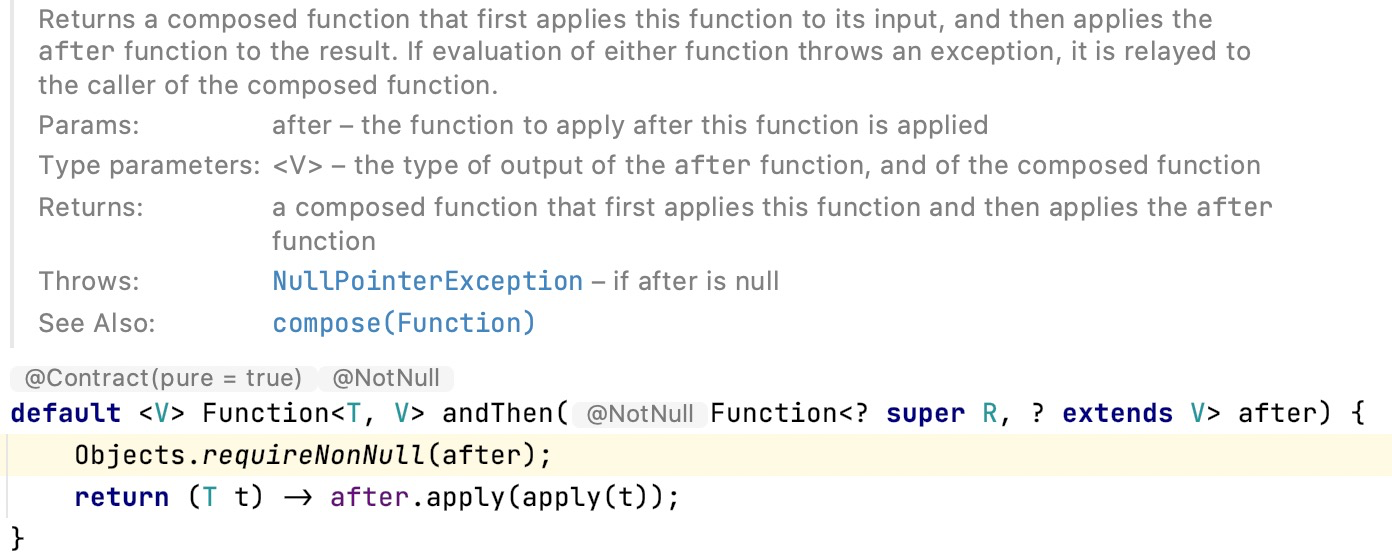
/** * Returns a composed function that first applies this function to * its input, and then applies the {@code after} function to the result. * If evaluation of either function throws an exception, it is relayed to * the caller of the composed function. * * @param <V> the type of output of the {@code after} function, and of the * composed function * @param after the function to apply after this function is applied * @return a composed function that first applies this function and then * applies the {@code after} function * @throws NullPointerException if after is null * * @see #compose(Function) */
2.3 Bifunction,输入两个参数,返回一个值
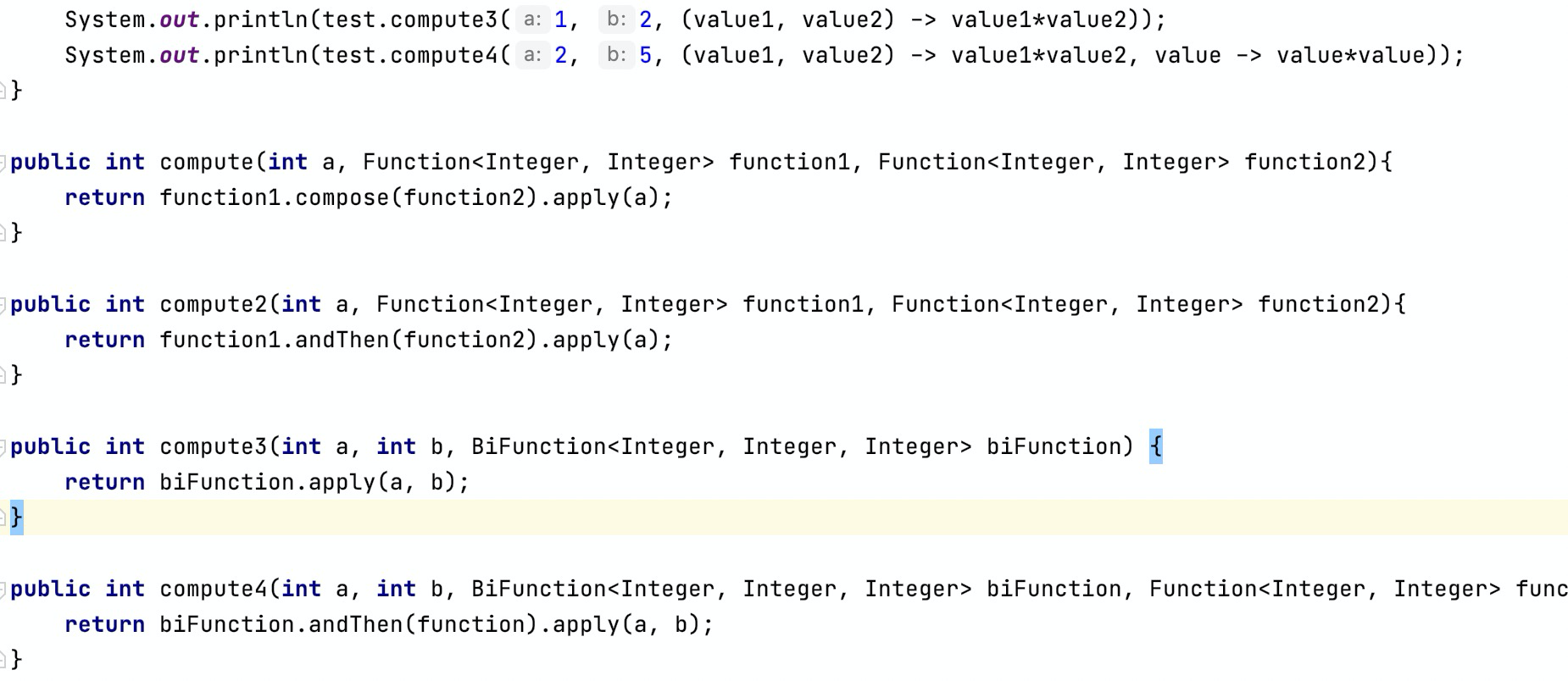
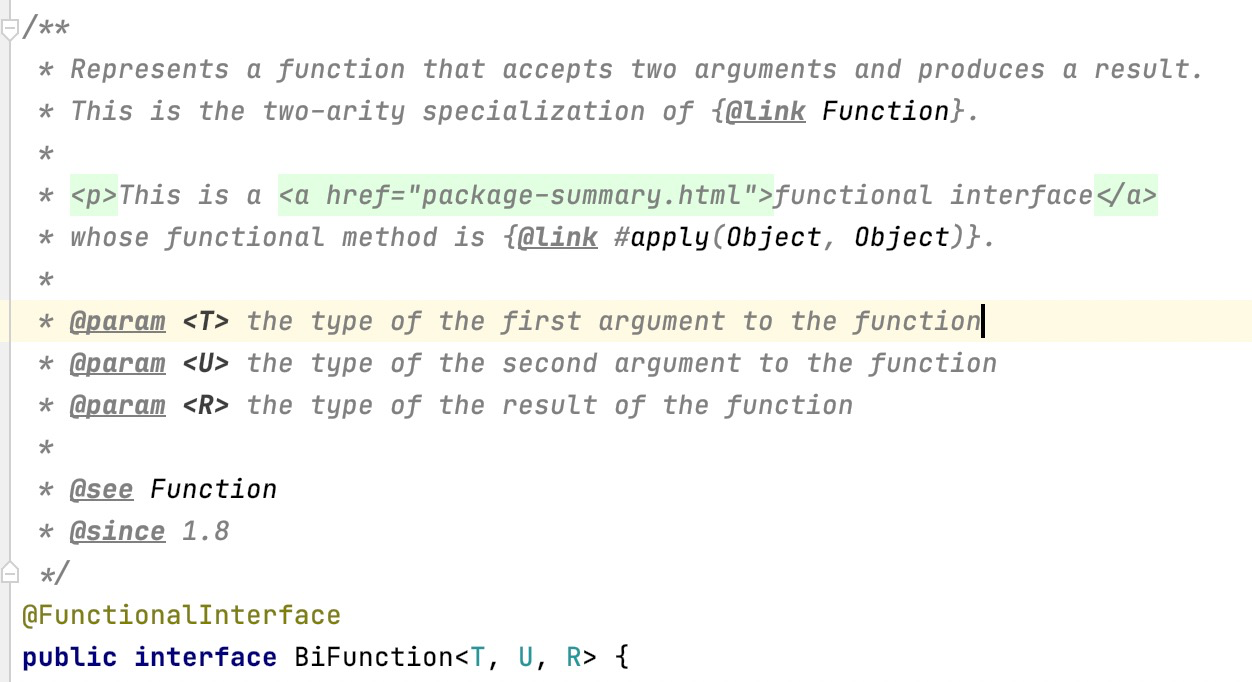
/** * Represents a function that accepts two arguments and produces a result. * This is the two-arity specialization(两个参数的特例) of {@link Function}. * * <p>This is a <a href="package-summary.html">functional interface</a> * whose functional method is {@link #apply(Object, Object)}. * * @param <T> the type of the first argument to the function * @param <U> the type of the second argument to the function * @param <R> the type of the result of the function * * @see Function * @since 1.8 */
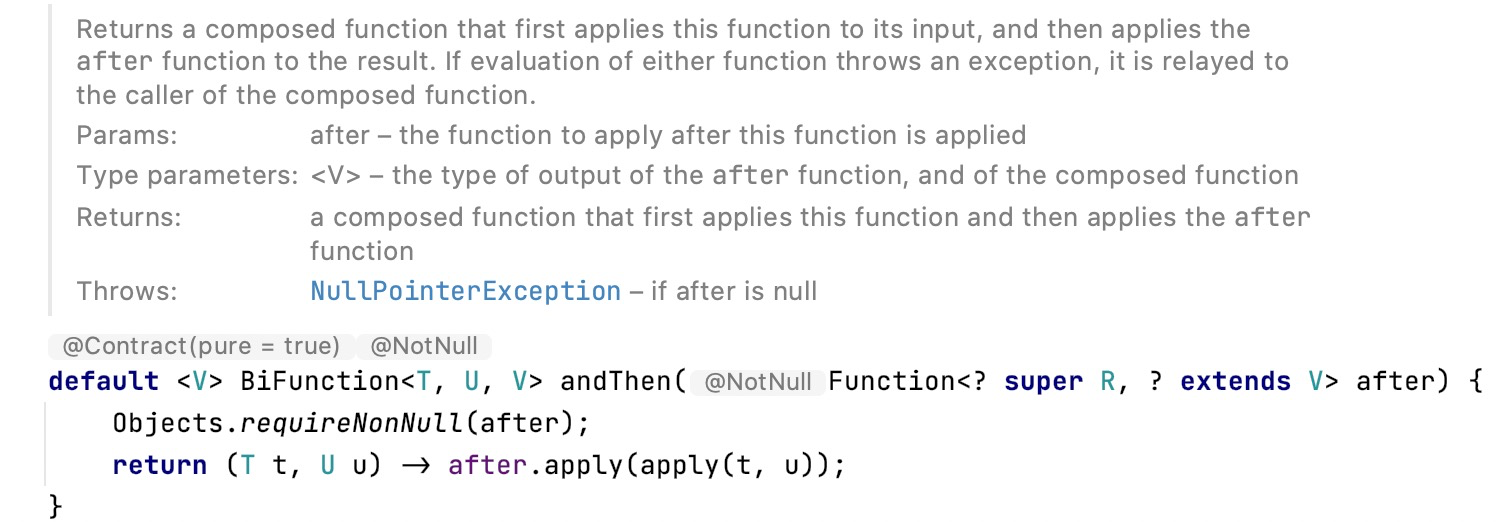
/** * Returns a composed function that first applies this function to * its input, and then applies the {@code after} function to the result. * If evaluation of either function throws an exception, it is relayed to * the caller of the composed function. * * @param <V> the type of output of the {@code after} function, and of the * composed function * @param after the function to apply after this function is applied * @return a composed function that first applies this function and then * applies the {@code after} function * @throws NullPointerException if after is null */
2.4 Predict
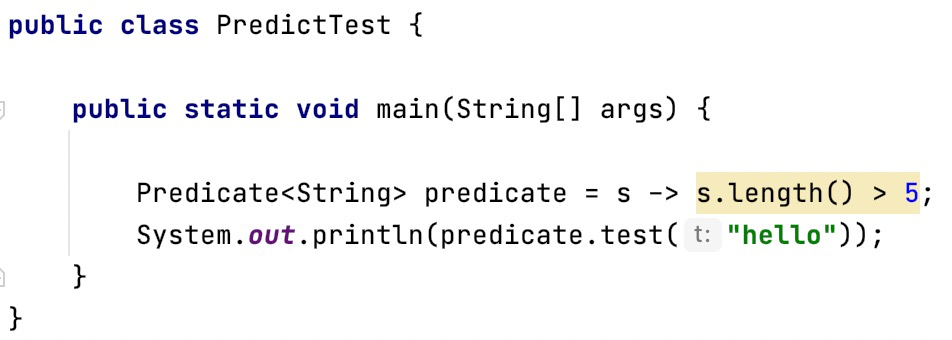

/** * Represents a predicate (boolean-valued function) of one argument. * * <p>This is a <a href="package-summary.html">functional interface</a> * whose functional method is {@link #test(Object)}. * * @param <T> the type of the input to the predicate * * @since 1.8 */

/** * Evaluates this predicate on the given argument. * * @param t the input argument * @return {@code true} if the input argument matches the predicate, * otherwise {@code false} */
懵懵懂懂,难得糊涂!
潜心所向,无关风月!



 浙公网安备 33010602011771号
浙公网安备 33010602011771号